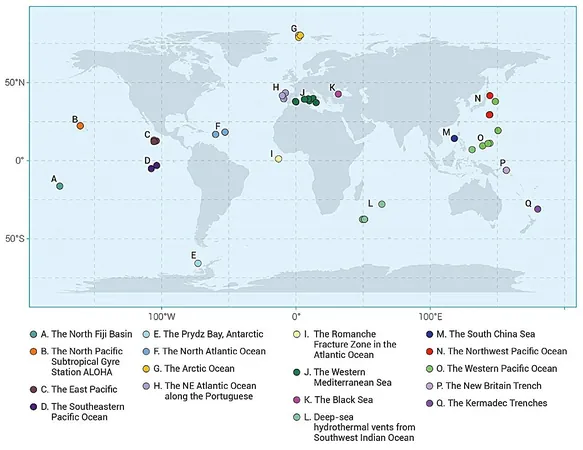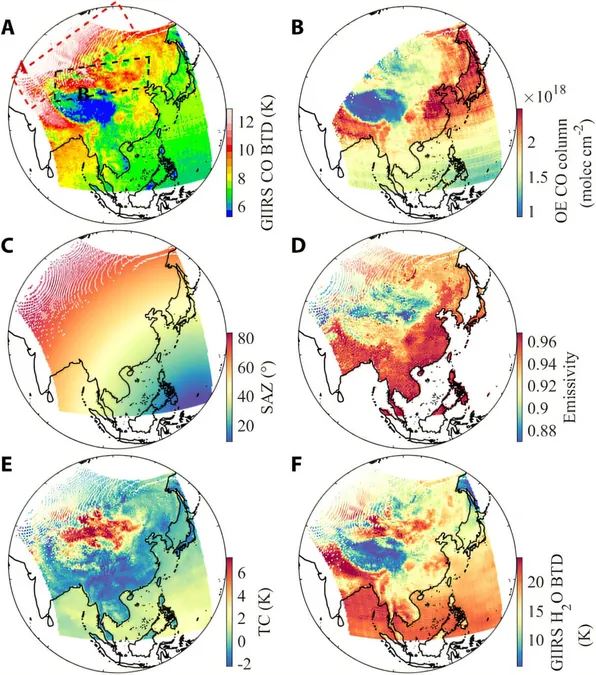
The Hidden Power of Deep-Sea Viruses: Nature’s Tiny Titans Influencing Climate Change!
2024-12-02
Author: Amelia
Introduction
The study of deep-sea viruses is gaining traction among scientists, shedding light on their crucial yet often overlooked role in global biogeochemical cycles and climate change. While these microscopic agents are minute in size, the impact they wield on marine ecosystems and our planet's climate is anything but small.
Ecological Roles of Deep-Sea Viruses
Recent research has highlighted the unique ecological roles played by deep-sea viruses, challenging the notion that studying these tiny entities in the expansive ocean is futile. Indeed, the community structure of deep-sea viruses reveals intricate distribution patterns influenced mainly by ocean depth and specific environmental conditions. According to Ying Han, an author of a review recently published in Ocean-Land-Atmosphere Research, "The deep-sea virus community is distinct and reflects a significant interplay between marine life and the broader ocean environment."
Abundance and Role in Energy Cycling
Notably, deep-sea viruses show a remarkable tendency to thrive in sediment environments, where their numbers can be astonishingly high compared to surrounding water samples. This abundance indicates how deeply ingrained they are in the ecological fabric of the ocean floor, leading to vital energy cycling and the evolution of genes through complex interactions with their hosts.
Impact on Nutrient Cycling
One of the most compelling aspects of these viruses is their ability to infect microbial communities, prompting the release of essential nutrients and carbon into the ocean. This process not only helps sustain life below the surface but also contributes significantly to the global carbon cycle—one of the key elements affecting climate regulation.
Genetic Exchange and Adaptation
Viruses facilitate genetic exchange among bacteria through a process known as horizontal gene transfer (HGT), allowing rapid adaptation to changing environmental conditions. Additionally, through lysogenic infection, viruses can integrate their genetic material within the host, enhancing the survivability of the infected organisms.
Interconnectedness with Biogeochemical Cycles
The interconnectedness of viruses, bacteria, and essential biogeochemical cycles—such as nitrogen and phosphorus—illustrates the pivotal functions these microscopic entities serve. They maintain the flow of vital elements, ensuring ecosystems remain resilient and functional. As the planet faces escalating ecological challenges, the understanding of deep-sea viruses and their systemic roles becomes increasingly critical.
Future Research Directions
Looking ahead, researchers plan to delve deeper into the world of deep-sea and trench viruses, particularly focusing on RNA viruses, to further unravel their intricacies and effects on our oceans and climate. The hope is that this knowledge will pave the way for innovative strategies to combat the adverse impacts of global warming and other environmental crises.
Conclusion
As we continue to explore these hidden realms, the insight gained could not only enhance our understanding of the ocean’s health but also improve responses to future ecological events. The tiny viruses of the deep, once thought to be inconsequential, are now recognized as powerful players in the game of life and climate. Are we ready to unlock the secrets of the deep-sea viruses and harness their potential for our planet's future?









 Brasil (PT)
Brasil (PT)
 Canada (EN)
Canada (EN)
 Chile (ES)
Chile (ES)
 España (ES)
España (ES)
 France (FR)
France (FR)
 Hong Kong (EN)
Hong Kong (EN)
 Italia (IT)
Italia (IT)
 日本 (JA)
日本 (JA)
 Magyarország (HU)
Magyarország (HU)
 Norge (NO)
Norge (NO)
 Polska (PL)
Polska (PL)
 Schweiz (DE)
Schweiz (DE)
 Singapore (EN)
Singapore (EN)
 Sverige (SV)
Sverige (SV)
 Suomi (FI)
Suomi (FI)
 Türkiye (TR)
Türkiye (TR)